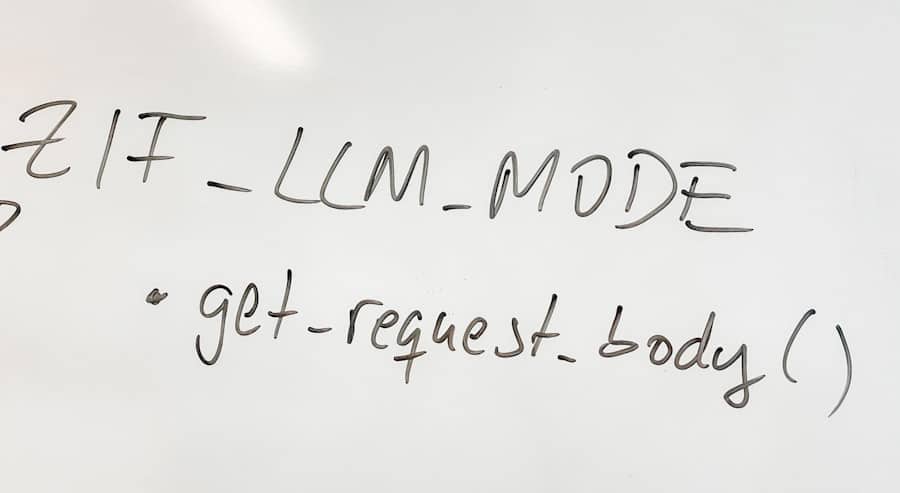The landscape of the gaming industry has undergone a significant transformation over the past two decades, with free-to-play (F2P) games emerging as a dominant force. Unlike traditional gaming models that require an upfront purchase, F2P games allow players to download and play without any initial cost. This model has democratized access to gaming, enabling a broader audience to engage with interactive entertainment.
The appeal of F2P games lies not only in their accessibility but also in their ability to provide a rich gaming experience without the barrier of entry that comes with a price tag. As a result, millions of players worldwide have embraced this model, leading to a surge in the popularity of mobile and online gaming. The success of F2P games can be attributed to several factors, including the rise of mobile technology and the increasing prevalence of high-speed internet.
With smartphones becoming ubiquitous, developers have capitalized on this trend by creating engaging games that can be played on-the-go. Titles such as “Fortnite,” “League of Legends,” and “Candy Crush Saga” exemplify how F2P games can achieve massive player bases and generate substantial revenue through innovative monetization strategies. However, the F2P model is not without its challenges, as developers must navigate the delicate balance between generating revenue and maintaining a positive player experience.
Key Takeaways
- Free-to-Play games are accessible to all players without an upfront cost, but often include in-game purchases and advertising to generate revenue.
- In-Game Advertising allows brands to reach a large audience through product placements, sponsored content, and video ads within the game environment.
- Virtual Goods and Microtransactions offer players the option to purchase in-game items, cosmetics, or currency to enhance their gaming experience.
- Subscription Models provide players with exclusive content, perks, and bonuses in exchange for a recurring fee, offering a steady revenue stream for game developers.
- Pay-to-Win Mechanics allow players to gain a competitive advantage by purchasing powerful items or abilities, potentially creating an unfair playing field.
- Sponsorship and Brand Partnerships enable game developers to collaborate with brands for in-game events, promotions, and exclusive content, creating additional revenue streams.
- Loot Boxes and Gacha Systems offer randomized rewards in exchange for real or in-game currency, often sparking controversy over their resemblance to gambling.
- Balancing Monetization with Player Experience is crucial for game developers to maintain a fair and enjoyable gaming environment while generating revenue through various monetization strategies.
In-Game Advertising
In-game advertising has become a prevalent monetization strategy within the F2P gaming ecosystem. This approach allows developers to integrate advertisements seamlessly into the gameplay experience, providing a source of revenue without requiring players to spend money directly. Advertisements can take various forms, including banner ads, video ads, and sponsored content.
For instance, a racing game might feature real-world car brands as part of its environment, while a mobile puzzle game could present players with optional video ads in exchange for in-game rewards. The effectiveness of in-game advertising lies in its ability to reach a targeted audience. Advertisers can leverage data analytics to tailor their campaigns based on player demographics and behavior, ensuring that their messages resonate with the intended audience.
Moreover, in-game advertising can enhance the overall experience by providing players with opportunities to earn rewards or unlock content through engagement with ads. However, developers must tread carefully; excessive or intrusive advertising can lead to player frustration and disengagement. Striking the right balance between monetization and user experience is crucial for maintaining player satisfaction while generating revenue.
Virtual Goods and Microtransactions

Virtual goods and microtransactions represent another cornerstone of the F2P monetization model. Players are often offered the option to purchase in-game items, skins, or enhancements that can enhance their gaming experience. These transactions are typically small in value but can accumulate significantly over time, leading to substantial revenue for developers.
For example, in games like “Fortnite,” players can purchase cosmetic items such as character skins or emotes that do not affect gameplay but allow for personalization and expression within the game world. Microtransactions can also extend to consumables or power-ups that provide players with temporary advantages or conveniences. While these purchases can enhance gameplay, they also raise ethical questions regarding fairness and accessibility.
Developers must navigate these concerns by ensuring that virtual goods do not disrupt game balance while still providing meaningful options for players who choose to invest financially.
Subscription Models
Subscription models have gained traction as an alternative monetization strategy within the F2P landscape. This approach allows players to access premium content or features for a recurring fee, often on a monthly or yearly basis. Games like “World of Warcraft” and “Final Fantasy XIV” exemplify this model, offering expansive worlds and rich content that justify the subscription cost.
In the context of F2P games, subscription models can provide players with exclusive benefits such as ad-free experiences, early access to new content, or enhanced customization options. The subscription model appeals to both developers and players by providing a steady revenue stream while fostering player loyalty. For developers, predictable income from subscriptions can facilitate ongoing game development and support.
For players, subscriptions can offer a sense of belonging within a community and access to exclusive content that enhances their overall experience. However, developers must ensure that the value provided through subscriptions is compelling enough to justify the recurring cost; otherwise, players may opt out or seek alternatives.
Pay-to-Win Mechanics
Pay-to-win (P2W) mechanics represent one of the most controversial aspects of F2P games. This model allows players to gain significant advantages through monetary investment, often leading to frustration among those who prefer not to spend money. In P2W scenarios, players who invest financially may unlock powerful items or upgrades that enhance their performance in competitive environments.
This creates an imbalance where skill is overshadowed by financial investment, leading to accusations of unfairness. The presence of P2W mechanics can alienate segments of the player base who feel that their efforts are undermined by those willing to spend more money. Games that heavily rely on P2W elements often face backlash from communities and may struggle to retain players over time.
Developers must carefully consider how they implement monetization strategies to avoid alienating their audience while still generating revenue. Striking a balance between offering meaningful purchases and maintaining competitive integrity is essential for fostering a healthy gaming environment.
Sponsorship and Brand Partnerships

Sponsorship and brand partnerships have emerged as lucrative avenues for monetization within the F2P gaming sector. By collaborating with established brands or companies, game developers can create unique experiences that resonate with players while generating additional revenue streams. These partnerships can take various forms, including branded in-game items, special events featuring brand promotions, or even cross-promotional campaigns that benefit both parties.
For example, popular battle royale games often collaborate with major franchises or brands to introduce limited-time events featuring themed content or exclusive items tied to movies or television shows. Such collaborations not only enhance player engagement but also provide brands with direct access to a highly engaged audience. However, developers must ensure that these partnerships align with their game’s identity and do not detract from the overall experience.
When executed thoughtfully, sponsorships can create win-win scenarios for both developers and brands while enriching the player experience.
Loot Boxes and Gacha Systems
Loot boxes and gacha systems have become increasingly prevalent in F2P games as a means of monetization. These systems allow players to purchase randomized virtual items or characters, often creating excitement around the potential rewards they may receive. Loot boxes are commonly found in various genres, from first-person shooters to mobile puzzle games, while gacha systems are particularly popular in Japanese mobile games where players collect characters or items through randomized draws.
While loot boxes can enhance player engagement by introducing an element of chance and surprise, they have also sparked significant controversy regarding their ethical implications. Critics argue that these systems can resemble gambling, particularly when players feel compelled to spend money for a chance at desirable items or characters. Regulatory bodies in various countries have begun scrutinizing loot boxes, leading some developers to adjust their practices in response to public concern.
Balancing the excitement of randomized rewards with responsible monetization practices is crucial for maintaining player trust and satisfaction.
Balancing Monetization with Player Experience
As the F2P model continues to evolve, developers face the ongoing challenge of balancing monetization strategies with player experience. While generating revenue is essential for sustaining game development and support, prioritizing player satisfaction is equally important for long-term success. Developers must consider how their monetization practices impact gameplay dynamics and community engagement.
To achieve this balance, many developers are adopting player-centric approaches that prioritize transparency and fairness in their monetization strategies. This includes providing clear information about what purchases entail and ensuring that paid content does not create significant disparities between paying and non-paying players. Engaging with player feedback and fostering open communication channels can also help developers understand community concerns and preferences regarding monetization practices.
Ultimately, the future of F2P games will depend on how well developers navigate these complexities while delivering enjoyable experiences that resonate with their audiences. By prioritizing player experience alongside innovative monetization strategies, developers can create sustainable ecosystems that benefit both themselves and their communities in the ever-evolving world of gaming.
In the realm of free-to-play games, understanding and implementing effective monetization models is crucial for developers aiming to maximize revenue while maintaining player satisfaction. A related article that delves into optimizing content strategies, which can be beneficial for game developers looking to enhance their in-game content and marketing efforts, is Boost Your Content with NeuronWriter: SEO & NLP Optimization. This article explores how leveraging SEO and NLP tools can significantly improve content visibility and engagement, which is essential for attracting and retaining players in the competitive gaming industry.
FAQs
What are free-to-play games?
Free-to-play games are video games that are available to play at no cost. Players can download and play these games for free, but they often include in-game purchases or advertisements to generate revenue for the developers.
What are monetization models in free-to-play games?
Monetization models in free-to-play games are the methods used by developers to generate revenue from the game. These models can include in-game purchases, advertisements, subscriptions, and loot boxes.
What are in-game purchases?
In-game purchases are items or features that players can buy within the game using real money. These purchases can include cosmetic items, power-ups, or additional content that enhance the gameplay experience.
What are advertisements in free-to-play games?
Advertisements in free-to-play games are promotional content that is displayed within the game. These can include banner ads, video ads, or sponsored content that players can interact with. Developers earn revenue from advertisers based on the number of views or clicks on these ads.
What is a subscription model in free-to-play games?
A subscription model in free-to-play games offers players the option to pay a recurring fee in exchange for access to additional content, features, or benefits within the game. This can include exclusive items, in-game currency, or ad-free gameplay.
What are loot boxes in free-to-play games?
Loot boxes are virtual items that players can purchase within the game, containing a random assortment of in-game items. These items can range from cosmetic skins to powerful weapons, and players have the chance to obtain rare or valuable items from these loot boxes.

